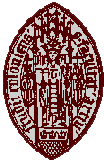
 |
The Cytoskeleton Group | ||
|
|
The basal apparatus, the centrosomal equivalent of flagellate eukaryotes, has attracted the attention of algal researchers since its discovery by Irene Manton and collaborators in 1955 because of its implications in many cellular functions such as motility, transport, cell division, sexual reproduction, cell polarity, sensory transduction, etc. All these functions depend on the cytoskeleton, the basal apparatus acting as the principal organizer of the cytoskeleton of flagellate cells. In 1982, the first basal apparatus protein, centrin, was discovered as the major constituent of fibrous flagellar roots in the flagellate green alga Tetraselmis striata and shown since then to be a universal centrosomal protein in eukaryotes including humans. Current research is focused on the structural, molecular and functional analysis of the algal basal apparatus and its proteins, and is greatly facilitated by novel techniques of molecular genetics. |
||||||||
|
We are interested in the molecular composition of the basal apparatus and the regulation of basal apparatus development and function. To address these questions we are using two different biflagellate green algae as model systems: Spermatozopsis similis and Chlamydomonas reinhardtii. Spermatozopsis similis is an excellent model for the biochemical analysis of the basal apparatus/centrosome. Basal apparatuses can be purified and using preparations of purified basal apparatuses we have been able able to identify novel basal apparatus proteins (e.g. BAp 90, BAp 95). The characterization of two more novel basal apparatus proteins is on the way. A detailed description of basal apparatus ultrastructure allows us to analyze even minor components of the basal apparatus. Chlamydomonas reinhardtii is the model organism for functional studies. A wide variety of molecular tools such as GFP-tags, RNA interference, DNA-microarrays, BAC-, genomic and cDNA libraries are available. Many mutants affecting basal apparatus development and function have been described and can be obtained from at the culture collection Chlamydomonas Genetics Center. Furthermore, a genome project is on its way and 89,430 Chlamydomonas ESTs have been made available to the Chlamydomonas community. |
|||||||||